Ryan Hall's Blog, page 308
December 18, 2015
Competitor’s 2015 Runners of the Year
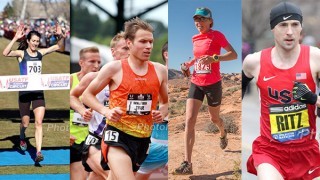
From high school track to grueling ultramarathons, memorable moments abound in the world of competitive running in 2015. In the U.S., a few names stood out from the rest.
Competitor’s 2015 Runners of the Year took into account the calendar year of performances among distance runners who are living and training in the United States, regardless of where they competed.
Here are our winners:
Photo Gallery
1 of {count}
Back to Start
View Larger Image

High School Girls: Katie Rainsberger, 17, Colorado Springs, Colo.
The Air Academy senior and daughter of world-class distance runner Lisa Rainsberger has steadily improved over the years, displaying her best performances yet in 2015. After winning the class 4A individual cross country state championship for the second year in a row and helping her school team to win their first girls cross country state championship, she finished off the season strong with a win at Nike Cross Nationals in December. The win caps four consecutive runs in which Rainsberger placed 13th and then 6th twice before her victory at this year's meet in 16:56.8. Her time broke Allie Ostrander's 2014 course-setting record by 23 seconds and was off by only six seconds from achieving Alexa Efraimson's meet record. Not only has Rainsberger dominated the high school girls cross-country field, though, she's also made significant headway on the track, claiming state titles in the 800 meters, 1,600m and 3,200m this past spring. Recently, she announced she will be running for the University of Oregon next fall. (Photo: Pierre Robichaud)
View Larger Image

High School Boys: Drew Hunter, 18, Purcellville, Va.
A rising star in track and field since last year, Drew Hunter kicked off this year with several national championship titles. First he won the 2-mile in 8:48.22 at the New Balance Indoor National meet. He then became the second male high school athlete in the history of the Penn Relays to win both the 3,000-meter and mile titles—the 3,000m being a second consecutive win after his national sophomore record of 8:16.31 set in 2014. At the adidas Grand Prix Boys Dream Mile in June, he lost to Grant Fisher by one second, but achieved a new personal best of 4:02.36. Later that month, the Loudoun Valley High senior redeemed his near win by beating Fisher in the final 100 meters of the Brooks PR Invitational 2-mile in 8:42.51 (another new PR). Although, Hunter excels on the track, his most impressive performance this year was his recent victory at the Foot Locker Cross Country Championships in San Diego, where he beat out the top 40 boys in the country in 14:55.7. (Photo: PhotoRun.net)
View Larger Image

College Men: Edward Cheserek, Oregon
Edward Cheserek already has already racked up nine NCAA titles—more than Steve Prefontaine—in two and a half years in Eugene. The 21-year-old Oregon junior won his most recent title on Nov. 21 when he won the NCAA Division I Cross Country Championships for the third straight year by running away from a strong field on the 10K course in 28:45.8. He also won the 5,000 (13:48.67) and 10,000 (28:58.92) at the NCAA outdoor track championships and the mile (3:57.94) and ran a leg on Oregon's victorious distance medley relay (9:30.53). Cheserek, a native of Kenya who was a record-setting high school runner in Newark, N.J., also won numerous Pac-12 Conference titles and other major meets. Only a second-place finish in the 3,000 at the indoor championship—when he was nipped at the line by teammate Eric Jenkins—kept him from a perfect 2015. (Photo: PhotoRun.net)
View Larger Image

Women’s Track: Emily Infeld, 25, Portland, Ore.
Emily Infeld (Nike) was the best U.S. story at the IAAF World Championships in Beijing, surging at the end of the 10,000m to catch Molly Huddle at the finish line to grab bronze in 31:43.49—the only medal won by the U.S. in the distance events at worlds. The bronze was even more special considering Infeld’s long road back from multiple stress fractures that nearly ended her running career. She slowly worked her way back in 2015, culminating in a fantastic summer that saw her place third at both the U.S. championships and worlds. (Photo: PhotoRun.net)
View Larger Image

Men’s Track: (tie) Ben True, 29, Hanover, N.H., and Galen Rupp, 29, Portland, Ore.
These two have developed a pretty good rivalry, and their 2015 results are too close to call. True (Saucony) won the New York Diamond League 5,000m in 27:43 in June, then qualified for worlds in both the 5,000m and 10,000m with a pair of runner-up finishes at the U.S. championships. He finished sixth in the 5,000m at worlds. Rupp (Nike) won his seventh consecutive national title in the 10,000m, then ran both the 5,000m and 10,000m at worlds, finishing fifth in each race.
View Larger Image

Women’s 5K-Half: Molly Huddle, 31, Providence, R.I.
Molly Huddle (Saucony) once again established herself as American running’s most dominating force. Her 2015 successes on the road are numerous, and she was nearly unbeatable—the spring was highlighted by Huddle becoming the first American to win the NYC Half (in 1:08:31) followed by a victory in the B.A.A. 5K that set a new American record at the distance (14:50). She spent the fall racking up USATF titles in the 5K, 10K, 12K, 20K and 10-mile. Her disappointment on the track at the world championships is well-documented (she let up at the end of the 10,000m and allowed Emily Infeld to slip past her), but it was one of the few blemishes in an otherwise remarkable year. (Photo: PhotoRun.net)
View Larger Image

Men’s 5K-Half: Ben True, 29, Hanover, N.H.
Not to be outdone by Ben True the track runner, Ben True the road runner had a great year as well. He set the American record for the road 5K with a 13:22 in winning the B.A.A. 5K. He also became the first American winner of the Healthy Kidney 10K in New York since 2007, when he outlasted Stephen Sambu in a time of 28:13.
View Larger Image

Marathon Women: Desiree Linden, 32, Rochester Hills, Mich.
This year was a comeback year for Desiree Linden (Brooks). After finishing 10th in the 2014 Boston Marathon—the second American woman after Shalane Flanagan—this year, she regained the top American spot in fourth place, five spots ahead of Flanagan. However, it's not just her fourth-place finish that entitles her as runner of the year, it's her awe-inspiring performance of leading the pack for nearly 21 miles that had us gripping our seats; a reaction that hasn't been experienced since her 2011 Boston performance. Although, it's the only major marathon achievement of hers this year, her strong 2:22:38 Boston finish has her among the favorites for the 2016 U.S. Olympic Trails Marathon on Feb. 13. (Photo: PhotoRun.net)
View Larger Image

Marathon Men: Dathan Ritzenhein, 32, Grand Rapids, Mich.
In his debut at the Boston Marathon, Dathan Ritzenhein (Nike) was the top American finisher placing seventh in 2:11:20. Meb Keflezighi, who finished one place behind Ritzenhein, may have had two strong marathon performances this year in Boston (2:12:42) and New York (2:13:32), but Ritzenhein's strong first-time Boston showing despite debilitating winds, and especially after not having competed in a major marathon since Chicago in 2013, was impressive. Ritzenhein raced plenty of shorter distances in 2015, as well, but he’s looking to make the 2016 Olympic team in the marathon. (Photo: PhotoRun.net)
View Larger Image

Women’s Masters: Deena Kastor, 42, Mammoth Lakes, Calif.
Deena Kastor (ASICS) is already all over the American record books, but she added a big one this fall. She set out to break the masters record in the women’s marathon in Chicago, a mark that had stood for 10 years since Colleen De Reuck ran a 2:28:40. Kastor smashed the record, running a 2:27:47 and placing as the top American woman at the Marathon Major race. It was her first sub-2:30 marathon in six years, and put her back in the discussion about the 2016 U.S. Olympic team.
View Larger Image

Men’s Masters: Bernard Lagat, 41, Tucson, Ariz.
Meb Keflezighi had a great year at the age of 40, but Bernard Lagat (Nike) re-wrote the record books over and over in 2015. He set new over-40 world records in both the 10K (27:48 at the Great Manchester Run) and the 5K (13:40 at the Carlsbad 5000) on the roads, as well as several marks on the track including the mile, 2-mile and 3,000m. Now 41, Lagat heads into 2016 determined to make his fifth Olympic team. (Photo: PhotoRun.net)
View Larger Image

Trail Running Women — Megan Kimmel, 35, Carbondale, Colo.
Megan Kimmel (ASICS) lived a vagabond life during the summer of 2016, spending several weeks training and racing in the Alps. She won some of the year’s most grueling and competitive races—including the Dolomites SkyRace on July 19 in Italy (2:25:57), The Rut 25K in Big Sky, Mont., (1:46:31), the 39K Flagstaff Sky Race (4:29:42) on Oct. 3 in Arizona and the Moab Trail Marathon (3:28:00) on Nov. 8 in Utah (which doubled as the USATF Trail Marathon Championships)—and also won the U.S. Skyrunner Series. Kimmel, 35, the USATF 2015 Trail Runner of the Year (for sub-ultra distances), capped her season by winning The North Face Endurance Challenge 50-mile championship (7:13:52). She also placed 16th in the Zermatt Marathon in Switzerland in July and in June she ran three legs for the winning team at the Beat the Sun Relay that sent teams of runners from around the world circling the Mont Blanc mountain range in France, Italy and Switzerland during the longest day of the year to celebrate the Summer Solstice. (Photo: Myke Hermsmeyer)
View Larger Image

Trail Running Men – Joe Gray, 31, Colorado Springs
Joe Gray (Merrell) remains the gold standard among American trail runners focused on sub-ultra distances. Although he finished third at the U.S. Mountain Running Championships, he turned in one of his strongest performances ever at the World Mountain Running Championships in Wales, placing fifth and leading the U.S. to a fourth-place finish. The 31-year-old Gray, who ran collegiately at Oklahoma State, also set a new FKT (Fastest Known Time) at the popular Manitou Incline in Manitou Springs, Colo., scaling the ridiculously steep 0.9-mile former railway—which has an average grade of 40.3 percent—in 17 minutes, 45 seconds, eclipsing the widely accepted mark of 18:31 set by mountain running legend Matt Carpenter in 1998. He placed second overall (and was the top American) in the 39K Flagstaff Sky Race (4:06:28) on Oct. 3 in Arizona, and placed second at the Moab Trail Marathon (3:09:00), which doubled as the USATF Trail Marathon Championships. Gray, a 19-time U.S. national team member, nine-time national champion and the 2015 USATF Mountain Runner of the Year, won the Mt. Washington Road Race in June for the second straight year, clocking a 58:15—the fastest American time ever and the second-fastest time in the event’s history. (Photo: Myke Hermsmeyer)
View Larger Image
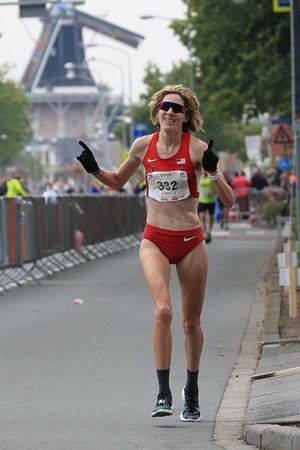
Women’s Ultrarunning: Camille Herron, 34, Warr Acres, Okla.
Camille Herron (Skechers) has taken an unconventional approach to ultrarunning by sticking to road races in 2015, but it’s hard to argue with her success. The soon-to-be 34-year-old (Herron’s birthday is on Dec. 25) smashed the legendary Ann Trason's 26-year-old U.S. Championship Record—and ran the fastest 100K ever on American soil—at the Mad City 100K in April, running 7:26:24 to capture her first national title of the year. Herron went on to win the world title in September, running 7:08:35, the fourth fastest 100K time in history, leading the American women to the team title in the Netherlands. In October, she set a new world’s best for 50 miles on the road, winning the U.S. title in 5:38:41. And just this month, Herron won the 50K world title in Doha, running 3:20:59.
View Larger Image

Men’s Ultrarunning: Zach Miller, 26, Manitou Springs, Colo.
Zach Miller (Nike Trail Elite) didn’t race a ton in 2015 but when he did, he raced quite well. The hard-charger from Manitou Springs, Colo., led through 30K at Transvulcania in May before fading and eventually battling back to finish fifth overall. In August, he won the prestigious (and ridiculously mountainous) CCC in France, clocking 11:53 for the 100K distance to finish 13 minutes ahead of fellow American Tim Tollefson. Miller closed out the year with a dominating wire-to-wire win at The North Endurance Challenge Championships, covering the hilly 50-mile course in 6:12:37. (Photo: Franck Oddoux/UTMB)
View Larger Image
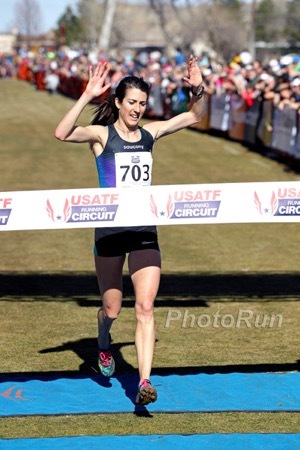
Women’s Cross Country: Laura Thweatt, 27, Boulder, Colo.
Racing in her backyard of Boulder, Colo., Laura Thweatt (Saucony) crushed the competition at the U.S. Cross Country Championships in February, running 27:41 to win the senior women’s race by 31 seconds. She placed a solid 29th at the world championships on March 28, thirty seconds behind teammate Sara Hall, who finished 20th. Thweatt closed out the year with a close second-place finish at the U.S. Club Cross Country Championships in San Francisco, one second behind 2014 U.S. cross-country champion Amy Van Alstine. (Photo: PhotoRun.net)
View Larger Image
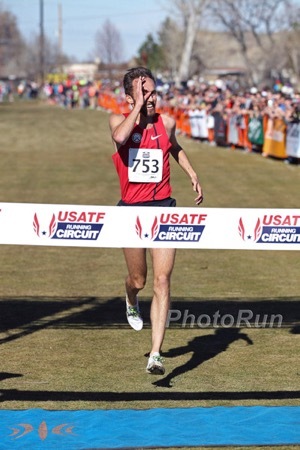
Men’s Cross Cross Country: Chris Derrick, 25, Portland, Ore.
Chris Derrick (Nike) three-peated at the U.S. Cross Country Championships in February, dominating the 12K race in 36:18—30 seconds ahead of second-place finisher Bobby Curtis. He went on to place 24th—and top American finisher—at the world championships in China on March 28. (Photo: PhotoRun.net)

More Galleries
The post Competitor’s 2015 Runners of the Year appeared first on Competitor.com.
The 10 Most Popular Training Articles of 2015

Here are some of the training tips that proved to be a big hit with Competitor readers in 2015:
Photo Gallery
1 of {count}
Back to Start
View Larger Image

7 Habits of Highly Effective Runners
Make these habits work for you and become a more motivated, happier and fitter athlete.
Read the Article.
View Larger Image

A Smarter Way to Increase Running Mileage
The 10 percent rule is flawed. Here's a better way.
Read This Article
View Larger Image

3 Keys to Running With Proper Form
Some effective tips from biomechanist Jay Dicharry.
Read This Article
View Larger Image

Functional Form: 4 Fixes for Your Running Mechanics
Some simple exercises that will have you running better.
Read This Article
View Larger Image

How Runners Can Improve Foot Strength
Some exercises that will build strength in your feet.
Read This Article
View Larger Image

How to Become a Beast on the Uphills
Some tips to help you take on those uphills with strength.
Read This Article
View Larger Image

How to Run the Tangents in a Race
A look at the race strategy that could get you that PR.
Read This Article
View Larger Image

A science-backed workout runners will love.
Read This Article
View Larger Image

Dumbbell Complexes for Faster Running
Build strength and power for running with these short weight circuits.
Read This Article.
View Larger Image

Is Running Good for Weight Loss?
A deeper look at the connection between running and shedding pounds.
Read This Article

More Galleries
The post The 10 Most Popular Training Articles of 2015 appeared first on Competitor.com.
Shoe Talk: The Nike Flash Pack
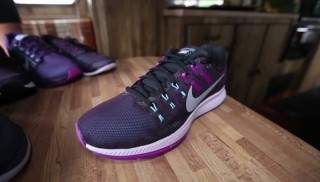
Nike took four of its signature running shoes and made them part of the “Flash Pack.” What does that mean? We jumped into the Nike Trailbago and got all the details.
The post Shoe Talk: The Nike Flash Pack appeared first on Competitor.com.
Coach Bill Squires’ 3 Keys For Effective Group Training
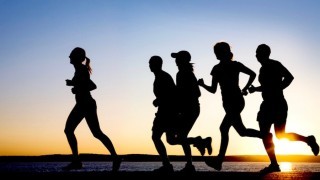
Photo: Shutterstock.com
When I spoke with legendary running coach Bill Squires earlier this month, I asked him to share three life-long lessons for runners with me. Squires, now 83, still speaks with a straightforward lucidity, but I couldn’t get him to give me three reasons. All he wanted to talk about for our allotted hour was training groups.
If there’s one person who is qualified to dish on that subject, it’s Squires. After all, the Arlington, Mass.-native practically wrote the book on training groups. In the late 1970s and early 1980s, while at the helm of the Greater Boston Track Club, Squires supervised the training of icons such as Bill Rodgers, Greg Meyer, Dick Beardsley, and Bob Hodge—turning them all into world-class runners.
RELATED: The Squires Long Run
No matter how much I wanted to steer conversation away from training groups to other topics like the importance of long runs or training on the course you plan to race, I couldn’t get Squires off the topic. In his thick Massachusetts accent, his language growing saltier throughout the chat as proof of his passion, he kept repeating why training groups are so important.
“Listen, you got to understand that when you train in a group, you do things you didn’t think you could do. It’s as simple as that,” Squires says. “You can’t do it alone. No way.”
Squires shared numerous stories that all ended the same way: runners ending their season by achieving what they didn’t believe was possible at the beginning. It was a pack mentality. As a runner’s level of confidence grew with each workout, the group’s collective confidence grew along with it. In Squires’ eyes, there’s no such thing as the loneliness of a long-distance runner. To him, group training was the key ingredient for individual success.
Here are his three keys to fostering collective success:
1. Form sub-groups according to ability.
Squires insists that runners need to train with other people who can push one other to get more out of themselves. “You got to have people all up there elbows to elbows,” he says. “There’s strength in a group like that. It’s the only way you can get better—by getting pushed by people and pushing people.” Squires recalls that before new runners were allowed to join a particular group, they had to complete a weeks-long routine that Squires says “gave them a little base” before they were observed and assigned to one of three sub-groups. And within the three sub-groups, runners could move up (or even back) depending on how they were holding up in workouts.
2. Designate leaders and deputies.
Squires firmly believed in group leadership and delegation. “I always had that one superstar whiz kid in each of my groups,” he recalls. “He was the guy who had the fastest times and everyone drooled over. I made him—that guy—the main leader.” In addition to that one leader, Squires would also deputize two or three co-leaders. “Those other guys wanted to keep up with the leader,” he says of the co-leaders. “And everyone else wanted to keep up with all three of them.”
3. Always keep the groups guessing.
For Squires, there never seemed to be a rigid plan or schedule for a particular training day. “[Arthur] Lydiard once asked me where I got my training ideas from,” Squires recalls with a laugh. “And I told him I dreamed them up. They all came from my head!” Without a doubt, Squires had masterful intuition. He could read his runners. He recalls going into training sessions with a general idea of what he wanted his runners to do, but would deviate depending on how the workout was progressing. “There was always that one new guy who wanted to know exactly what we were doing—how many and for how long. And after a while, he knew not to ask me that,” Squires says with a laugh.
Squires would watch his runners coming around the track and could tell what they needed. “I looked at their arm carriage,” he explains. “A runner’s arms can say a lot about them. I knew from their arms if they were done or if I could give them some more.” Squires says this kind of uncertainty within workouts helped trained his runners mentally for the chaotic dynamic that can often unfold in races. “If a runner’s aware of everything that will be asked of them, they won’t know what they’re really capable of,” he contends. “I was the coach and the ‘how far? and ‘how many more?’ part is my job to know—not theirs.”
The post Coach Bill Squires’ 3 Keys For Effective Group Training appeared first on Competitor.com.
Which Matters More: What You Eat or How Much You Eat?

Photo: Shutterstock.com
‘Tis the season to worry about weight gain. According to research, most adults add a pound or two between Thanksgiving and the New Year. This phenomenon is blamed on seasonal changes in diet. Runners, though, have an additional reason to worry about weight gain. For us, the holiday season is also the off-season—the time of year when we are not actively preparing for races and are therefore burning fewer calories through exercise.
Worrying about weight gain naturally leads to thoughts about how to prevent it. These thoughts, in turn, are based on beliefs or assumptions about what causes weight gain. That’s where things get tricky. There is much disagreement about the core cause of weight gain in our public discourse. One faction argues that weight gain is caused simply by eating too much. The other faction contends that it’s not how much but what you eat—particularly carbs or fat—that matters. Who is right? The answer will help you avoid gaining weight during this holiday/off-season.
RELATED: For Runners, Not All Weight Loss is Good Weight Loss
A Calorie is a Calorie
The idea that how much people eat is more important than what they eat where gain is concerned is summed up in the expression, “A calorie is a calorie.” Proponents of this view argue that if you eat too much of anything, you will gain weight, and that changing what you eat won’t cause you to lose weight unless the changes reduces the number of calories you consume.
Among the experts who encourage people to focus on how much rather than what they eat is Brian Wansink, author of “Mindless Eating.” Wansink’s research has shown that many people today eat food not because they’re hungry but because it’s there. If we simply pay more attention to what we’re doing and avoid eating more than necessary to satisfy our hunger, we can reduce our daily calorie intake by up to 20 percent and lose weight without changing what we eat.
John Cisna has demonstrated real-world proof that this approach can work by losing 56 pounds in six months eating nothing but McDonald’s. He pulled it off by limiting his total daily energy intake to 2,000 calories. You might assume that respecting this ceiling required him to avoid French fries and load up on salads instead. In fact, Cisna ate everything on the restaurant’s menu and had at least one serving of French fries almost every day.
Yet there are clear limits to the notion that all calories are the same. Most people who succeed in losing weight do make changes in what they eat, and there is plenty of science showing that it is possible to lose weight without making any conscious attempt to eat fewer calories if the right changes in food choices are made.
In a study performed at the University of Washington, overweight women spontaneously began to consume 441 fewer calories per day, on average, when their protein intake was increased to 30 percent of total calories. As a result, they lost weight despite not making any conscious effort to eat less. The reason is that protein is more filling than other calorie sources (carbohydrates and fat). Also, high-protein diets increase the body’s metabolic rate, so more calories are burned throughout the day.
However, loading up on protein isn’t the only way to lose weight without consciously reducing calorie consumption. In 2015, researchers at the University of South Carolina reported that volunteers placed on a vegan diet for six months lost an average of 7.5 percent of their initial body weight without making any attempts to eat less. In this case, dieters received more of their calories from vegetables and other foods that have a high content of fiber and water, which made them more filling than other foods, calorie for calorie.
If you want to see for yourself that all calories are not the same, try this experiment: At noon tomorrow, eat 500 calories worth of French fries or one large order of fries. Then at noon the next day, eat 500 calories worth of apples; that’s five and a half apples. In the unlikely event that you’re able to force down that much red delicious, you won’t want dessert, whereas you’ll still be hungry after eating the same caloric order of fries
RELATED: How Many Calories Does Running Burn?
The post Which Matters More: What You Eat or How Much You Eat? appeared first on Competitor.com.
‘Race-cation’ Trip Planning a Booming Business
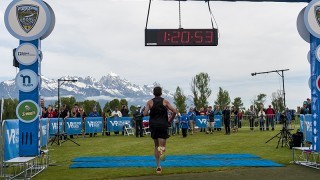
More and more runners want to combine racing with tourism, like this runner at the Grand Teton Half. (Photo courtesy of Vacation Races)
More than three decades ago, Thom Gilligan was working for a travel agency and just getting into marathon running.
When his running buddies started asking if he could help plan their trips to races, Gilligan had his a-ha moment: Why not create a travel business that caters to runners?
In 1979 Gilligan founded Marathon Tours, now the world’s oldest company dedicated to bringing people to running events, he says. In the beginning, his company led trips to only a few races. Today, it offers lodging, race and activity packages to 44 running events around the world.
“If anyone had told me that running would become the lifestyle activity it is today, I wouldn’t haven’t believed it,” Gilligan says. “Back then it was the loneliness of the long distance runner.”
Running is no longer a solitary hobby, but a social experience that involves family, friends and post-competition festivities.
People are also blending running events with vacations, known as a “racecation” or “runcation,” a trip that includes running, sightseeing and relaxation. And with more destination race choices than ever, it’s no wonder that some runners want help with travel planning.
In 2014, there were more than 1,200 competitive marathons in the United States, a 300 percent increase from 15 years ago, according to Running USA. Half marathons are also growing, with an estimated 2,200 in the U.S. in 2014.
Internationally, the growth is noticeable, too. For example, organizers in Japan have introduced several new marathons in recent years, and Japan now hosts five of the world’s 15 largest marathons.
The Benefits of a Racecation Planner
Anthony Copeland-Parker, 60, has been to more than a dozen races around the world with Marathon Tours since 2012. He and his girlfriend like traveling with a group and not worrying about complicated logistics.
“With some of these marathons, it’s much easier to have someone who has been there to work to get you to the start, to the expo, some place to eat,” he said. “You have all that background taken care of, and then they find a first-class tour guide to make sure you see all the highlights. They provide that sense of security and make sure you have a good experience.”
Just narrowing down destination choices can be difficult, says Kyle Bacon, a marathoner and experienced traveler. Outside of his full-time job as an accountant, the 25-year-old has his own trip-planning business for runners.
“People look for help because it’s a little overwhelming,” he says, adding that it can be especially challenging if a runner is unfamiliar with international travel.
He discusses trip budget with his running clients, and finds out what marathon size and type of course they prefer.
In addition to creating itineraries, he shares airline booking and race tips he has picked up from his own travels.
“I’ll always recommend to run the marathon the second day of wherever you are,” he says. “It works well to do one at the beginning of the vacation and then have time to relax and take in the place.”
He also recommends booking a hotel near the race course, if possible, because you don’t know how your legs or stomach will feel after the run.
New Kinds of Businesses
Some travel planners create their own running events as part of their business.
Ziyad Rahim, a veteran adventure racer, founded Z Adventures this year. Rahim organizes unique running challenges and then leads groups of runners to them.
Rahim and 10 runners recently took a week-long Carnival cruise from Miami to the Western Caribbean, where Rahim had mapped out marathon courses at each of the five places they docked.
“There is a lot of work that is required in planning such an adventure,” he says in an email. “This starts from choosing the right cruise where we have enough time on each island to complete the marathon.”
To ensure no one gets lost or misses the ship’s departure, all the courses were out-and-back loops near the cruise terminal, he says. Five runners completed all five marathons, while the others did various distances in each place. Rahim has another Caribbean cruise and marathon challenge planned for January with 40 runners.
Last year Heather Miller launched Runfari, an online resource guide for runners who are planning their own racecations. The site has a list of races in the U.S. and Canada with accompanying information about things to do, lodging and eateries.
“Sometimes you don’t want to do things in a group,” says Miller, 30. “This gives you the flexibility to do what you want on your schedule. This is for the traveler who likes to have more control and is comfortable taking care of the logistics themselves.”
Runfari also provides details that runners tend to appreciate, like which hotels offer complimentary breakfast. Runners who sign up for a free subscription get access to restaurant, hotel and activity deals from vendors that have partnered with the site.
Some entrepreneurs are approaching the runcation business from a different angle.
Salem Stanley, 34, started Vacation Races in 2012 to draw runners to U.S. national parks. The half marathon and 5K series has grown to eight races that center around parks such as Zion, Yosemite, Yellowstone and Grand Teton.
The scenic runs, which are cup-less and require runners to use hydration packs to reduce the environmental impact, are kept to a maximum of 2,000 to 2,500 participants. He doesn’t currently offer lodging and race packages, but hopes to eventually create a designated campground at some events for race participants.
After the race, runners are encouraged to explore the park with hiking challenges. Those who finish the official hikes and take photos as proof get discounts on future events.
“They are signing up for the whole experience,” Stanley says. “It’s not just a race.”
RELATED: How One Business Blends Running With Tourism
The post ‘Race-cation’ Trip Planning a Booming Business appeared first on Competitor.com.
December 17, 2015
26 Strong: Defining Race Moments
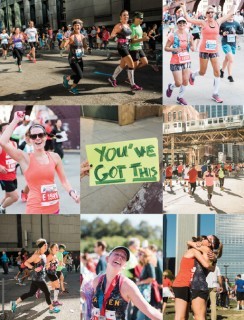
Success is determined by more than just finishing a marathon.
When training for a marathon, reaching the finish line after 26.2 miles of running is the ultimate goal, but it’s far from the only achievement. For first-timers, success happens when logging runs of double-digit mileage for the first time, earning a new 5K PR or tackling a previously intimidating hill. It’s choosing sleep over Netflix, a group run instead of happy hour or a green salad over chili cheese fries.
Just as a marathon finishing time isn’t the only mark of achievement, no single workout or decision makes or breaks a marathon season. Instead, it’s a collection of successes—adapting to the physical and mental stress, listening to your body, overcoming obstacles, executing your training plan and, of course, ultimately running 26.2 miles.
Success [sek’ses]
noun—the accomplishment of an aim or purpose
*According to Oxford Dictionaries
Professional runner Megan Lizotte sees each workout as a drop of water in a bigger bucket. Each workout, just like each success, builds on the ones before it until you eventually reach your goal. This is the same theory behind the building blocks and measured progression of marathon training.
For the participants of 26Strong—a collaboration between Competitor and Saucony pairing 13 experienced marathon mentors (coaches) with 13 first-time marathoners (cadets) with the goal of running the 2015 Chicago Marathon on Oct. 11—the successes were as unique as the runners themselves.
Training Success
Some cadets were running hobbyists. Others ran in high school or college. And quite a few had trained for a half marathon prior to joining this year’s training program. But longer runs and increased intensity of marathon training were definitely new territory for all of them.
“There were many times I doubted myself and my ability to conquer the distance,” says Kellen McAvoy, a cadet from San Diego whose personal mantra was: you are stronger with every mile. “Training for the Chicago Marathon was one of, if not the most, mentally and physically challenging things I’ve ever attempted.”
The time commitment was also a big adjustment. Training for a marathon takes dedication and time that has to be carved out of already busy schedules. Whether cadets were students, parents or going to the office every day, fitting in the training was a challenge.
“I started a new year of residency training and marathon training at the same time,” says Kendall Shultes, a pharmacy resident in St. Louis. “Being able to juggle my new position and running farther than I ever had made me feel successful.”
Success comes from adaptability—switching to morning or evening runs, perhaps running to or from your kid’s soccer game for a long run or fitting in a speed work session at lunch.
“Because of my schedule, I had to learn to love to run in the afternoon and evening,” Shultes says. “The struggle was real the first couple of times, but now I can’t wait to get home and run in the park after work as the sun sets.”
Listening to your body
Focused training can lead to growing pains as your muscles strengthen and your body is taxed in different ways. New sensations, both good and bad, take getting used to. The trick is learning what’s right for you. If you pay attention, you’ll start to notice when you need to ingest more electrolytes, replace a run with cross training or take an extra day of rest.
“After battling nagging tendinitis back in 2013, the last thing I wanted to do was reinjure myself,” says Brittany Champagne, a cadet runner from Buffalo, N.Y. “I was finally cleared for a run/walk regimen last year. To go from not being able to run, following my recovery plan and running the Chicago Marathon, injury-free, in the span of two years is a huge success.”
Training helps your body adapt to the stress loads of a marathon. Expect aching and fatigued muscles. Learn the difference between an achy muscle that needs extra time on the foam roller and a niggling pain that might require a visit to the physical therapist.
Overcoming race-day obstacles
No matter how much you rehearse and prepare, something
always goes sideways on race day. Unexpected weather, lucky socks left at home or long bathroom lines—these and similar hiccups are almost a given. Using long runs as race-day rehearsals helps you prepare for different scenarios. As for the physical component, trust your training to carry you to the finish.
“I had to take a break after colliding with another runner at a water station in the middle of the race. I could feel the anxiety begin to creep up as I struggled to find my pace,” says May Zhu, a cadet who moved from Charleston, S.C., to Chicago during her marathon training. “My mind flashed back to all of my hard training, and I knew I had to keep going.”
Laura Baughman, a cadet from Portland, Ore., suffered debilitating leg cramps, definitely not part of her race-day plan.
“I’ve had minor problems with cramping in the past, but nothing like this,” says Baughman, who regularly encourages her two teenage daughters to set their sights high and strive for their goals. “Even with the cramping, I powered on, and used each mile marker as my next goal. I was ecstatic when I passed the 25-mile mark and saw a sign that said 800 meters, then another at 400 meters. I knew these distances. I knew this was just two times around the track—I knew I could run that far.”
Achieving your goals
When it comes to the marathon itself, your feelings of success
often relate to the goals you set when you began the journey. Did you want to set a PR, qualify for Boston or run the entire 26.2 miles? Multiple goals are smart for on-the-go expectation adjustments if needed. Whether it’s to place in your age group or thank every volunteer you can, make race goals that are meaningful to you.
“I had a Goal A and a Goal B. Goal A was to run the whole 26.2 miles, and Goal B was to finish,” says Ruth Fizzarotti, a first-time marathoner at the age of 59. “I had to take walk breaks, but I crossed the finish line. And I was thrilled. There will be more marathons and opportunities to go for my goals.”
Often goals are time-centered. Not only is the goal itself worthy, running numbers for 26.2 miles is a great distraction.
“My real goal was to finish in under four hours. It’s hard to run a smart race, and I’ve been known to go out too fast,” says cadet Lauren Fisher who ran with her coach, Katherine Hopper, as her pace taskmaster. “Katherine had me keep my speed in check until the halfway point. We ended up running negative splits and a 3:53! I felt exhausted but surprisingly good at the end.”
RELATED: Scenes From the Saucony 26 Strong Photo Shoot in San Diego
The post 26 Strong: Defining Race Moments appeared first on Competitor.com.
Strength Building with the Jump Rope Redux
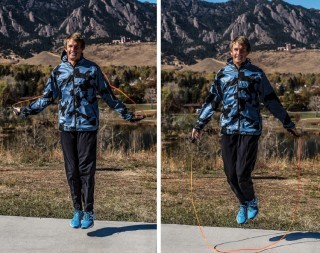
Photo: James Carney
Ewen North, head coach and director of Revolution Running in Boulder, Colo., says a jump-rope routine will work many muscles at once. “You’re engaging your calves, quads and glutes,” he explains. “Jumping rope also works on increasing Achilles tendon and plantar fascia strength and elasticity, and improves foot tendon strength for the push-off phase of a stride.”
Jumping rope is also an exercise for the brain and the neuromuscular timing you need to run efficiently. You’ll improve your coordination and focus because you have to concentrate as your hands and eyes work together to clear the rope, North says.
Here’s how to do it:
Step 1: Warm up with a 5-minute jog to engage the tendons and muscles you want to recruit.
Step 2: Using both hands, hold the handles of the jump rope behind you at waist level. Make sure there’s plenty of clearance above, in front and behind you.
Step 3: As you swing the rope over your head and hop over it with both feet, make sure your technique is quick and consistent, North says. Focus on bouncing off the balls of your feet in a quick rhythm. Build up to continuously jumping rope for 60 seconds.
Step 4: After completing the forward jump sequence, rotate your wrists and swing the rope in the opposite direction—a backward jump—and continuously jump rope in the same manner for 60 seconds.
Step 5: Finally, finish the routine by doing a forward jump for 60 seconds, but alternate bouncing off your left and right foot as you swing the rope forward.
RELATED:
—Pro Workouts: A Jump-Rope Circuit for Runners
—Video: Better Jumping for Faster Running
The post Strength Building with the Jump Rope Redux appeared first on Competitor.com.
Elisa Desco Interview: Trail Running’s Persona Non Grata Speaks Out
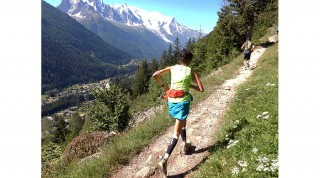
Italian trail runner Elisa Desco won the 2015 Mont Blanc Marathon on June 28 in Chamonix, France. She has competed in numerous races since her two-year IAAF suspension ended in 2012. Photo: Brian Metzler
We caught up with Italian trail runner Elisa Desco to ask questions about her failed doping test in 2009 and the resistance she faced at The North Face Endurance Challenge 50-mile championship on Dec. 5 near San Francisco. The intent to publish this interview is not to suggest Elisa Desco is innocent or whether she should be allowed to compete, but merely to further the conversation about the current issues and unknowns facing trail running and ultrarunning.
There’s a growing movement among race bureaucracies, athletes and media to call for lifetime bans for athletes who are caught using performance-enhancing drugs. It’s easy to cast off a rule-breaker as someone who disrespected the sport. Hammering a runner personally from behind a keyboard with self-righteous indignation might feel good, but there is often more than just the apparent facts of a particular case.
Any amount of false-positive tests would serve to undermine the entire system of drug testing. As such, doping-control protocols are designed to find those athletes who reach a 99.9 percent likelihood of PED use. This leaves a lot of suspicious tests unflagged and unreported—as was evident in the IAAF leaked test results which showed out of 12,000 blood tests from 5,000 athletes between 2001 and 2012, 800 tests were “highly suggestive of doping or at the very least abnormal,” but were ultimately found negative for PEDs.
Only 1 percent of worldwide samples tested are found positive. It’s with this in mind that I interviewed Elisa Desco, who failed a drug test in 2009 for EPO, served a two-year ban from the IAAF and has claimed her innocence ever since. (She has been eligible to compete since Aug. 28, 2012, when her IAAF ban ended and has competed in numerous races since then, including several high-level trail races this year.) Her entry in The North Face Endurance Challenge 50-miler in California on Dec. 5—which had a $30,000 prize purse (one of the largest in trail running), including $10,000 for the winners—forced the international ultrarunning community into a mostly productive, but sometimes vitriolic, discussion.
Ultimately, the online chatter, other media stories (including those about Lance Armstrong winning a trail race) and this interview all suggest that trail running is at a crossroads as more money and professional runners enter the sport, especially given that there are few races that test athletes and few races that have specific policies about doping or convicted dopers.
In reporting on ultrarunning’s growing need for testing, I reached out to Desco for an interview, but was unable to speak to her before that article was published on Dec. 9. After that story went live on Competitor.com, her partner, five-time world mountain running champion Marco De Gasperi, emailed me to say she’d be willing to talk. Since we don’t share a common language, the following interview was done in two parts over email. The interview is published below, edited only where necessary for optimally coherent translation.
You are an accomplished international athlete, but for our readers who might not know you, please tell us a bit of your background: Where were you born?
I [was] born in Savigliano in [the] province of Cuneo, in the northern west Italy, on the France border.
Where did you grow up?
I lived until when I was 25 with my parents and my brother in Paesana, a small village down the shadow of Monviso, a beautiful mountain, the highest of this part of the Italian Alps.
When did you start running?
I started running at the age of 12, following my father and brother who were passionate about this sport. I didn’t like it the first time, but I remember this passion grew in [a] few months and I [have] never stop[ped].
Are you a full-time athlete or do you also have another profession?
I consider myself not a professional runner, but first of all a mother. This is my profession, maybe even a housekeeper. Then, eventually, a professional runner.
When were you and Marco married?
We haven’t gotten married yet. We have lived together about eight years in our house [in] Bormio, Italy.
How many children do you have and what are their ages?
We have only one daughter, Lidia, born in 2010. She is our little angel!!
Was running always your primary sport growing up?
Yes, I can consider running the only sport I’ve done in my life. I believe I’m not so good in other sports, I’m quite bad in riding a bike or playing volley[ball] or other sports where you need some technique, generally speaking.
When did you realize that you had a certain aptitude for endurance sports, and running specifically?
When I was 16, my coach at that time told me how my skill[s] were towards the longer distances even [though] I was still young. At 20 I raced my first road half marathon in 1:18:30 without too many specific trainings because I was only a mountain runner.
Who are your main sponsors?
Scott, Compressport, Agisko and Nortec.
Which win do you consider your favorite?
Sierre Zinal 2013. [It is] one of the most iconic mountain running race in the Alps.
You won the won the 2009 World Mountain Running Championship in Campodolcino, Italy. Can you describe for us what happened after the race?
The same things [that] happen after an important victory. The incredible happiness after an unexpected victory, and the referee after the finish line [had me] sign the sheet for the anti-doping control. I remember I was the only one among the three of us tested, that the referee led me straight to the bar where the test took place.The others stayed outside with their referees for [a] longer [period of] time.
Can you take us through the drug-testing procedure?
The test is quite simple. First of all you need to fill in your dates [on] the sheet for the procedure. Then you have to choose a box with two separated glass jars. Then you take another plastic glass for the urine. When ready (I drank about 700ml of water before it), you can try to fill it up until the minimum requested (about 100ml) under the check of a doctor in the bathroom. Then, when it’s done, you can be helped by the doctor to share [the urine] in the two jars that must be closed with the special cap by you. Then [both jars are] introduced into the same box and the procedure ends with filling the sheet with the numbers impressed on the jars, the caps, and the box, which must be the same one. You must declare the medicine you took in the last few days eventually and fill in if everything in the control went OK.
Describe when you eventually heard that you failed the test?
I remember exactly that day, it was October, one month after the race in Campodolcino. I was at home, waiting for a call from the Italian federation for the details of the flight I would have had to take two days later for the IAAF World Half Marathon Championships in Birmingham (Great Britain). The mobile phone rang that early afternoon and a person at the other end told me I had failed an anti-doping test. I tested positive to a substance called CERA. I just watched the number on the mobile because I guessed someone was just kidding me, but I recognized the number was from Rome—from the Italian athletic federation! This person (from the health federation) said to me I could make a paper airplane with the air ticket to the race.
I was so shocked and immediately I called Marco. I was about 400K far away and when I reached him, he sat on the ground. We had heard about this heavy substance that summer from some cyclist scandals during the Tour de France, but we really didn’t know more about it. I felt totally empty and disoriented. I called my parents and some friends to tell them the shocking news, while Marco was driving back home and calling someone to understand better what happened. When he arrived at home, I was crying. I just had a chat with the president of my club, who didn’t believe my try to explain my incredulity and innocence in the situation! Marco’s face was disoriented. He got the information for this substance [and] I should have had to make at least an injection. I remembered, one month before the race I needed to go to the first aid at the hospital to make an injection of an antihistaminic due to a strong allergy on a leg to the Diclofenac present in a cream (Voltaire) the physiotherapist had used on my leg without asking me if I was subject to any allergies. We discovered after[ward] that antihistaminic cannot be related (or polluted, eventually) in any case to the CERA.
Have you ever used the banned substance erythropoietin?
NEVER used it, but even NEVER thought about it! I will declare my innocence until the end of my days!! The investigators (the Carabinieri in Italy) put my contacts (emails and mobile) under control for two years before and after [the test]. NOTHING was found that could be used against me to prove I got prohibited substances from anyone! I guess for heavy substances like this, some traces would have to be found—we are not talking about something you can buy in a store! Isn’t this something strange?
Have you ever used any banned substances?
NEVER in my life. This is so far away from my lifestyle and the love for my sport!
RELATED: Ultrarunning at a Crossroads: Is There a Growing Doping Problem on the Trails?
How do you explain the failed test after the 2009 Campodolcino World Championship?
I cannot say I’m guilty. I never cheated in 2009 or anytime! So, I went to all the hearings, after the positivity of the “B” sample, one month after, to say my version of the fact. There was something strange on the receipt of the box with the samples in Rome. On the sheet was written the box was damaged. Always in the report I got from the laboratory it’s written one of the samples belonged to another athlete (unknown, because there are only numbers impressed on) [and] couldn’t have been tested because the urine in the sample were not enough. This is also strange. Athlete is not allowed to get out the anti-doping test before you fill up the minimum requested! The anti-doping commission said to me this was not a problem of mine. They attacked me for the substance [that] was present (in a very huge quantity) in my urine. The scientific protocol for the CERA never fails in this case, even because they have had a double-check from another laboratory in Paris.
How did you attempt to redeem yourself and fight the charges?
It was a long fight, without any money from the start, but with the great motivation of someone who doesn’t want to accept to be killed for something [they] have never done! We found an important doctor representing the anti-doping laboratory in Firenze called Giuseppe Pieraccini. He listen[ed] to us, and accepted to try to follow-up [in] person the check on the B sample in Rome. He accept[ed] after Marco’s explanation of this case. He said he did it only because he is sure we could have nothing to do with the CERA. This is too big for us. Then we chose a good lawyer [who is an] expert in doping cases. He always told us, “please confess it before the commission could prove by some emails you are involved in this case!” We always denied obviously! We have nothing to hide and what should we confess?! We even tried to ask for a DNA test. It was so hard, long, and expensive. This could have been the only chance I had to show maybe those urines weren’t mine! I think mine was the only case of an athlete that have the chance to make it. Basically, because when in your conscience you know you are guilty inside yourself, there’s no reason to make it! Unfortunately, this test said the urines were mine, and I realized everything was finish[ed], definitely. I was against a wall, with great evidence against myself, no more money to pay the lawyer to continue a hard battle (lasting 16 months!), and the sport could convicted me with two years (but in reality more than three because they didn’t calculate the 16 months I spent self-suspended from September 2009 to February 2011 because I chose to make the DNA test!)
I [have] spoken to all my friends, and they understood I did everything possible I could! It was so hard. I passed really bad times if I think about when I was banned. I never slept, and I felt in depression. My desire to know who could have [done] this to me was strongly present every day. I had to be taken to the first aid [at] nighttime by Marco (with my little baby, of course!) because [of] some heart problems. I don’t wish to pass something like this to anyone!
Do you still believe in the testing system?
Yes, I still believe in it! I don’t believe in the persons. But I accepted to be in the Whereabouts program (test control at home) of the WADA before, and national now, plus in competitions (three times this year). Stories tell [us that] there could be athletes that use prohibited substances and can be negative at the test. But at least I hope it will never happen [to] the contrary anymore, this that happened to me! In addition, [after] talking to a doctor, I decided to build up a biologic[al] passport with blood exams in a hospital. Every month I check some specific parameters (such as reticulocytes) that can be shown as a strong defense if something like it happened in the past to me. My opinion is any federations must be pushing all their athletes to do it. It’s simple, not expensive at all, and everyone can show their test to the federation medical commission or to anyone.
Do you think the two-year ban is appropriate in general?
No, for two reasons. In my opinion there are different substances. There are the heaviest like EPO, CERA, hormone steroids … that are worth a lifetime ban for sure, in my opinion!
But, to make this, we need to be sure 100 percent [that] the athlete is guilty! I believe my case passed way too easily just for scientific evidence. But, when you don’t find from where these heavy substances came, how do you can say an athlete is 100 percent guilty? We cannot consider the corruption [that] is placed in some Federations, and interesting things have came out recently! Then there are prohibited substances (I’m not a kind of specialist, but this is what I learned from some scientists involved in the anti-doping commissions and at the head of the doping fight!) that could be considered not so strong and not able to change the improvements for long time. Of course, ANYONE who uses any drugs can be considered as a cheat, but I think there are these big differences and for these I think [a] lifetime ban is too much.
Do you think it was appropriate in your case specifically?
Well, as I told you, if I would have to consider my case, I would have to say what happened is something crazy. If one day the truth will come out and we will discover this was somebody’s incredible mistake or worse, someone who wanted to just cut me out for some unknown reasons, who will give me back my years, and all my life I spent with horrible times swimming in this shit?! What has happened to me [in the] last week before the TNF was so bad. I came back to my nightmares, and this has destroyed me again inside! I accept people can have an idea about me. They can think I’m a cheat. But I paid my time, and the rules (not mine, the international rules), say I can run again. I want to be tested anytime if it’s possible! But I have the right to run. If the rules are not good for some people, they can ask for a change. But using it against me wasn’t fair! It would have been [a] better fight to have the anti-doping test at the end of the TNF than try to force me out of the race instead.
RELATED: An Open Letter To Seb Coe: Invoke Lifetime Bans for Convicted Dopers
When you said you still believe in the testing procedures, but “I don’t believe in the persons,” who specifically do you mean. The doping-control agents or someone else?
I think generally the agents and doctors are very professionals and I fully trust them and their work! On the other hand, I’m very scared for those people who are politically involved in sport and, as recently happened, after investigations have been discovered acts of corruption.
You mentioned being treated unfairly at The North Face 50. Who treated you unfairly and what exactly happened?
Well, my trip started really bad, with a strong stomach virus that bent me the night before the flight and during the over 20 hours to get there. I could not eat or drink for two days, and my first days in San Francisco I felt totally empty… then, it was not easy reading in those days my name everywhere on the social [media], where most of the people wanted me pulled out from the race!
I’m not really a big fan of social [media] or the U.S. media, basically because I don’t speak English. But day by day, it started to appear on my timeline some articles with my face connected to the word “doping.” It was shocking and it has hurt me. Then I watched the loads of comments against me, and I even started to get some private messages that invite me to stay out, because I’m a cheat and nobody could accept me at the start! This never happened to me before, I was really afraid to get attacked during the race! It was such a nightmare for me, for sure this wasn’t fair, because I believe to have fully (served my time). I felt worse about this issue than I did about the stomach bug.
I discussed it for a long time with Marco, who was not sure he would allow me to race (for security purposes). Then, the few (but really good) American friends we have, cheered me up (and encouraged me) to start and try to not listen those bad voices. I think if I wouldn’t have given myself a chance, it would have been again another injustice otherwise: the World Anti-Doping Agency is the only organization that can judge and commit sentences. The rules aren’t written by me, and people can’t change them after only because they don’t like them.
Is this why you dropped out of the race?
Honestly, the virus problem, plus the stress I got, didn’t put me in the best condition to run 50 miles (my first ultra) so easily. I couldn’t eat and drink nearly anything, because after few miles I felt sick. At the first lights of the day, my situation got worse and worse. My legs weren’t too bad, but the stomach was so bad. Plus, for the reason I couldn’t drink or eat, my energy went down just after the (26-mile mark).
There were allegations after the race that people saw Marco “muling” for you on the course, but that is spelled out in the rules as illegal. Did he carry anything for you outside of the aid stations? [De Gasperi, 38, was officially entered in the 50-mile championship race and ran near Desco. They recorded similar splits through the 8.7-mile mark—1:07:11 for De Gasperi and 1:07:14 for Desco—but both runners dropped before they reached the next official split at the 44-mile mark.]
We read about this, and I am sure I can’t stop their thought that Marco helped me in the race, pacing my run or carrying water, for the fact he followed my run from close.
Do you think Marco came to the TNF 50 in San Francisco to help me? For those who don’t know him, he’s a professional runner, and even if he has never run an ultra before, he’s capable to fight for a victory! He was so kind to sacrifice his run for me, when I decided to start, he wanted to be sure that nobody made me any kind of problem after those messages I got. This was my first time in the U.S. I don’t speak any English, and many people promised I would have problems if I would race. Do you think I was in the best condition to run alone? We were under a microscope for sure, but those people didn’t understand my fear in the race was due to this not really warm intentions! Of course, for them all of us started at the same level, it was not, try to live what I lived, first! Plus, with my stomach problems, I had to walk from the 50K to 55K when I dropped. If I were alone I would never find a way to get out of the course and go back to the finish. Thanks to Marco and the car we stopped on the road, those guys were so generous to drive us to the finish!
My final thought is races like The North Face Endurance Challenge need to have the anti-doping tests, at least for the podium finishers. The few money for this it’s only an excuse, because it’s enough to cut some prices and eventually add 5 dollars at the entry fee of anyone to find more money. But maybe it’s easier to pull me out from the race and let people run that you never know if they run clean.
RELATED: Lance Armstrong Wins 35K Trail Race, Sparking Social Media Uproar
The post Elisa Desco Interview: Trail Running’s Persona Non Grata Speaks Out appeared first on Competitor.com.
Trail of the Week: Grand Canyon Rim-to-Rim-to-Rim
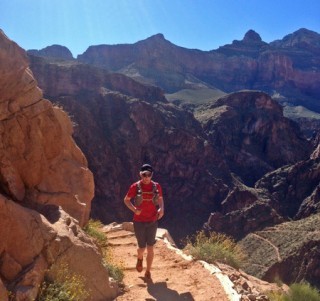
Our Trail of the Week feature is made possible through a partnership with Trail Run Project.
This is a must-do run! You’ll be propelled to get to the next mile by the beauty the canyon possess.
The unique aspect of crossing the Grand Canyon is that you first descend 9 miles, then run across the floor for 7 miles, before hitting the steepest part of the North Kaibab Trail where you’ll climb 7 miles up a 15-20 percent grade. Pacing yourself is the key to finishing R2R2R.
The views in the canyon as the sun kisses the walls change with every hour. Take your time to enjoy all that the Grand Canyon has to offer.
The trail is about the width of 1/2 a fire road and is very technical with big exposed drop-offs. There are big steps (depending on your height), and the puddles of mule pee are wide spread so watch your step and don’t face plant.
Watch the weather. During this trek, runners have been caught in a flash flood and experienced lightning, rock slides, and multiple muddy, fast, rushing streams.
RELATED: A Runner’s Guide to Conquering the Grand Canyon
The Data
Miles: 48.8
Runnable: 81 percent
Average Grade: 9 percent
Max Grade: 60 percent
Total Ascent: 11,161 feet
Total Descent: -11,161 feet
Highest Elevation: 8,190 feet
For a closer look, check out the interactive map, data, photos and virtual run simulator courtesy of Trail Run Project:
The post Trail of the Week: Grand Canyon Rim-to-Rim-to-Rim appeared first on Competitor.com.
Ryan Hall's Blog
- Ryan Hall's profile
- 21 followers



